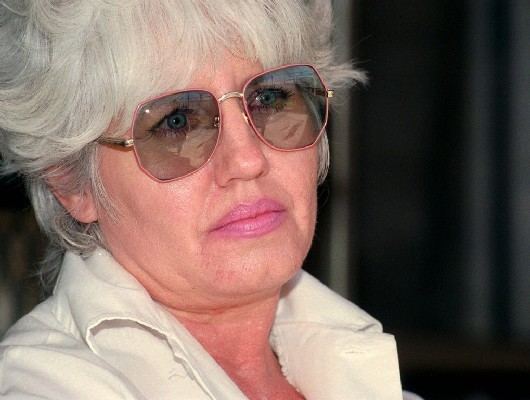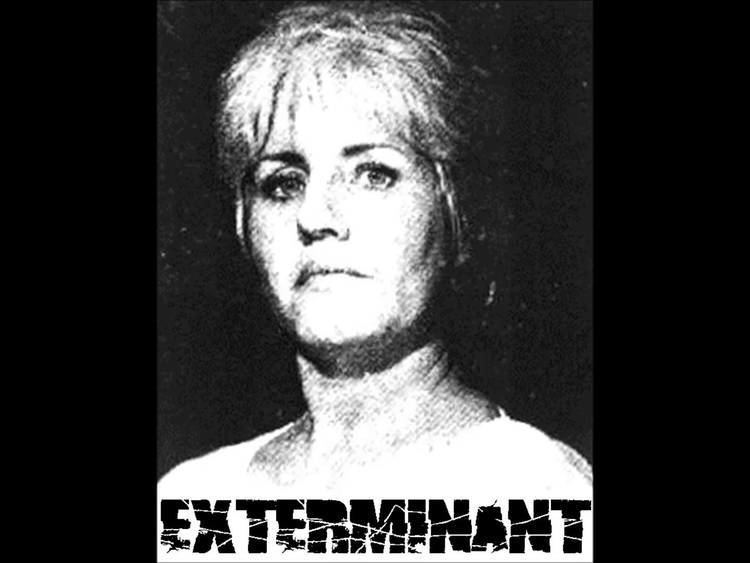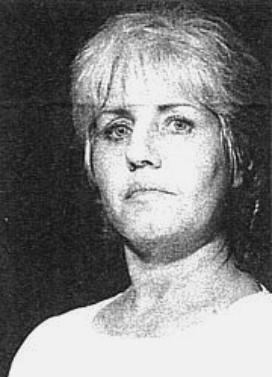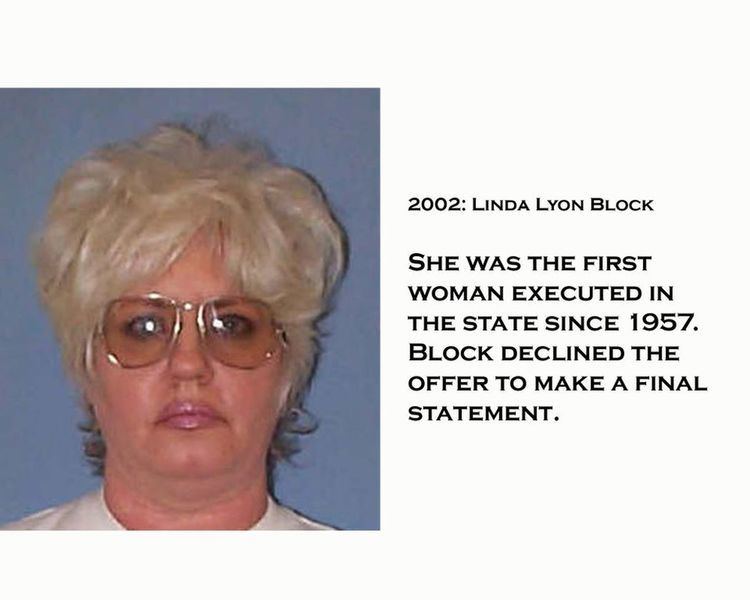Name Lynda Block | ||
 | ||
Died May 10, 2002, Escambia County, Alabama, United States Similar Wanda Jean Allen, Frances Newton, Betty Lou Beets | ||
Lynda Cheryle Lyon Block (February 8, 1948 – May 10, 2002) was an American convicted murderer. She was the first woman Executed in the state of Alabama since 1957, and 9th woman executed in the U.S. since reinstatement of the death penalty in 1976. Block was the last individual executed by Electrocution who was not given a choice of lethal injection, which is (as of 2017) the primary protocol in all the states that also maintain execution by electrocution.
Contents

Lynda Lyon Block On Death Row most excited crime story
Background

Lynda Cheryle Lyon was born February 8, 1948, in Orlando, Florida, to Francis (Frank) Stephen Lyon and Berylene Elisabeth Owen. Lynda, and her sister Denyce (born 1952), lost their father when she was 10, when he died of heart failure. Lynda and her mother were never close, and Block claimed that her mother was both physically and mentally abusive.

Her second husband, George Sibley, claims that a constant trait of Block's was charity. While living in Key West she served as Secretary of the Humane Society, and also as animal abuse investigator. She was also active in civic work besides her service to the Humane Society: for two years she served as president of the Friends of the Library in Key West and served as publicity director for a mayoral candidate.

Before the crime that led to her conviction and transfer to Alabama's death row, Block published Liberatis, a political magazine. She came from such a high social standing that many were shocked to learn of her crime.
Crime

On October 4, 1993, Lyon’s common law husband, George Sibley, and Lyon's 9-year-old son were sitting in a parked car in the lot of a Walmart store in Opelika, Alabama. A passer-by expressed concern for Lyon’s son to Opelika Police Sergeant Roger Motley, saying it appeared to her as if the boy wanted help. She also believed the family could be living in the vehicle. At that time, Sibley and Lyon were on the run from the law in Florida after failing to appear for sentencing on an assault charge against Block's ex-husband. Motley cruised the lot and parked behind Sibley's car. He approached the vehicle and asked for Sibley's license.

By Sibley's own account, he was explaining to Motley, who had asked for his driver's license, why he was not required to have one when he observed Motley placing his hand on his service revolver. Sibley then drew his gun. Motley took cover behind his patrol car; witnesses stated Sibley fired first. Block was at a payphone when she heard the gunfire. She drew her gun and witnesses stated that she was in a crouched position when she fired. Block claimed that she fired just as she stopped running toward Motley. Motley, who had given his bulletproof vest to a rookie officer, was mortally wounded in the chest.
Part of an anti-government movement, Block and Sibley had renounced their citizenship and destroyed their birth certificates, driver's licenses, and Social Security cards. They refused to cooperate with their court-appointed attorneys, maintaining that they had acted in self-defense. They also maintained that Alabama did not have the authority to try them as it was not properly re-admitted into the Union after the American Civil War. Although it could not be determined who fired the fatal shot, they were both convicted of capital murder and sentenced to death.
Death row
Block, Alabama Institutional Serial #Z575, entered death row on December 21, 1994. While on death row, she was held at the Julia Tutwiler Prison for Women in Wetumpka, Alabama.
During her time on death row, Block was interviewed by writer Tahir Shah, who included her reflections in his book Travels With Myself, in the chapter entitled "Women on Death Row". In her very candid responses, Block reflects on the incident that got her sentenced to death, her reaction upon hearing the sentence, and what it was like to live on death row. Shah also shared a video on his YouTube channel, also titled "Women on Death Row," where he discusses his experience interviewing Block on death row.
Execution
She was executed on May 10, 2002. Block's execution occurred at the Holman Correctional Facility near Atmore, Alabama.
Before the execution, three friends visited Lyon in her final holding chamber for several hours. Lyon also saw a spiritual adviser. She had not requested a last meal, nor did she make a final statement. Though she was allowed to choose two witnesses to her death, Lyon chose her spiritual adviser, Sally Michaud, as the only person to view her death. Sally did not attend the execution, however. Two witnesses to the execution were members of the victim's family: Motley's sister, Betty Anne Foshee, and their mother, Anne Motley. Lyon was executed in Alabama's Yellow Mama.
At approximately 12:00 midnight, she entered the execution chamber, wearing a white prison outfit. Her shaved head was covered with a black hood. At 12:01 a.m., the current was turned on. 2,050 volts of electricity were applied to her body for 20 seconds, and then 250 volts for 100 seconds. At 12:10 a.m., she was pronounced dead. She was the last person to be electrocuted in Alabama and the first woman executed in the state since 1957.
Sibley filed a hand-written petition asking the Alabama Supreme Court to block his execution, claiming that Lyon had fired the shot that killed Motley. He was executed on August 4, 2005 by lethal injection.
